Are you tired of dealing with a cold and inefficient heating system constantly? Don’t worry; bleeding your hot water heat may be the solution to your problem.
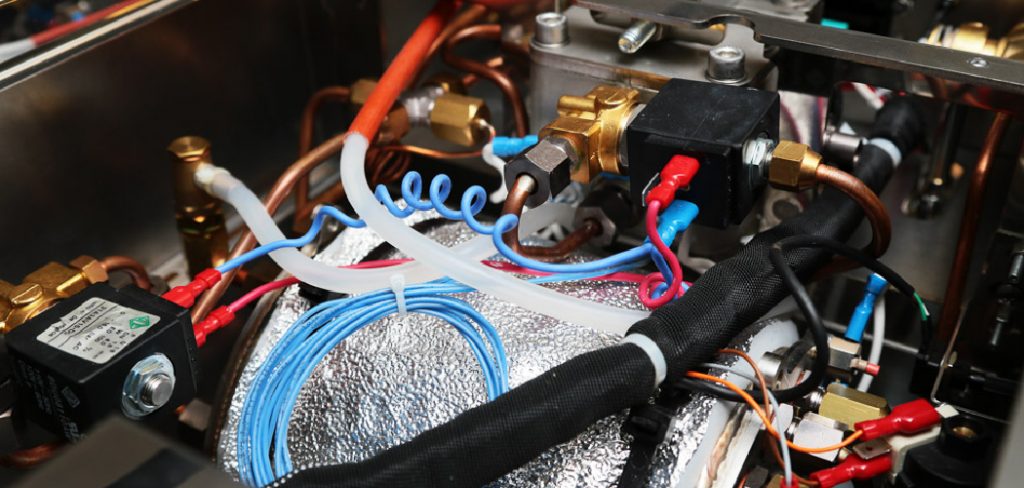
How to bleed hot water heat is an essential maintenance task that ensures your heating system operates efficiently and effectively. Over time, air can become trapped in the pipes and radiators, leading to uneven heating, strange noises, and reduced performance. By removing this excess air, you can restore proper circulation and improve the overall functionality of your system. This simple process not only helps to save energy but also prolongs the lifespan of your heating equipment.
Whether you’re experiencing cold spots in your radiators or preparing for the colder months, learning how to bleed your hot water heating system is a valuable skill every homeowner should have.
What Are the Benefits of Bleeding Hot Water Heat?
As mentioned, bleeding your hot water heat has numerous benefits. Here are some of the top advantages that make this maintenance task worth learning:
- Improved Heating Efficiency: When air is trapped in your system, it creates barriers that prevent hot water from circulating freely. This can lead to cold spots and an overall decrease in heating performance. By bleeding your hot water heat, you remove these barriers and allow for better circulation, resulting in more consistent and efficient heating.
- Reduced Energy Consumption: A poorly functioning heating system means it will have to work harder to produce the same amount of heat. This translates into higher energy bills and unnecessary strain on your equipment. Bleeding your hot water heat can help to reduce your energy consumption by allowing your system to operate at its optimal level.
- Eliminates Strange Noises: If you’ve noticed strange gurgling or banging noises coming from your heating system, it could result from trapped air. Bleeding your hot water heat helps to release this air and eliminate these annoying noises, making for a more peaceful home environment.
- Extends Equipment Lifespan: By regularly bleeding your hot water heat, you are reducing the strain on your equipment and preventing potential damage. This not only helps to prolong the lifespan of your heating system but also saves you money in the long run by avoiding costly repairs or replacements.
What Will You Need?
Before you begin bleeding your hot water heat, make sure you have the following items on hand:
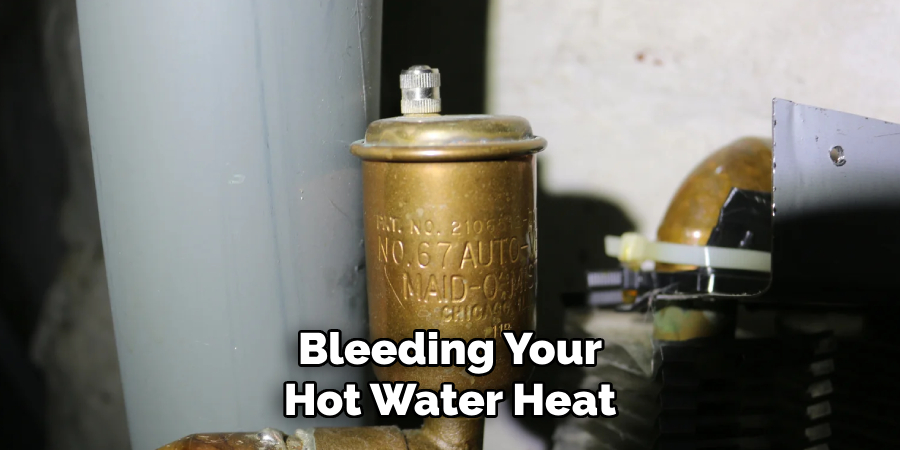
- A towel or rag to catch any water that may drip out
- A radiator key (some radiators have a built-in bleed valve that can be opened with a small flat-head screwdriver)
- A container to collect excess water (if needed)
Once you have these items, you’re ready to start the bleeding process.
10 Easy Steps on How to Bleed Hot Water Heat
Step 1. Turn Off Your Heating System:
To safely begin the bleeding process, it’s crucial to turn off your heating system and allow it to cool down. This step prevents accidental burns or injuries from hot water or steam that may escape during the process. Additionally, turning off the system ensures that any air trapped in the radiators or pipes remains stationary, making removing it easier. Locate your heating system’s main power switch or thermostat and switch it off. Wait 30 minutes to an hour for the system and radiators to cool completely before proceeding. Taking this precaution is essential for a smooth and safe bleeding process.
Step 2. Identify the Radiator That Needs Bleeding:
Inspect your radiators to determine which ones require bleeding. Signs that a radiator needs bleeding include uneven heating, with the bottom feeling warm while the top remains cool, or hearing gurgling noises inside the radiator. Start with
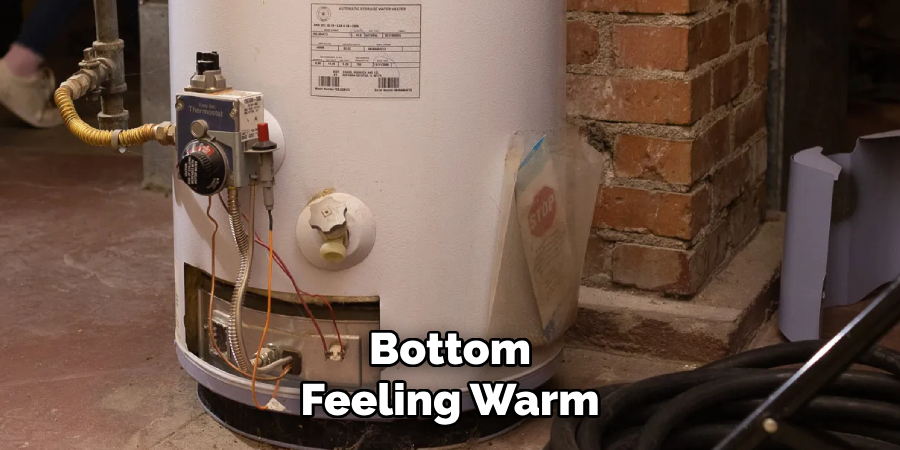
the radiator furthest from the heating system, as trapped air typically gets pushed to the farthest point in the circulation system. By identifying the correct radiator, you can effectively ensure the bleeding process addresses the issue.
Step 3. Gather the Necessary Tools:
Before bleeding your radiator, ensure you have the proper tools ready. The most commonly needed tool is a radiator key, although some modern radiators may require a flat-head screwdriver instead. Additionally, have a small container or bowl to catch any escaping water and a cloth or towel to wipe up any spills. Gathering these items beforehand will help ensure an efficient and mess-free process.
Step 4. Bleed the Radiator:
Once the tools are ready, locate the bleed valve on the radiator. This is typically a small valve at the top corner of the radiator. Insert the radiator key or screwdriver into the valve and turn it slowly in a counterclockwise direction. You will hear a hissing sound as trapped air begins to escape. Keep a cloth or container under the valve to catch any dripping water. Once the hissing stops and water starts to flow steadily, close the valve by turning it clockwise. Be careful not to over-tighten it to avoid damage. Repeat this process for any other radiators that need bleeding.
Step 5. Check the Boiler Pressure:
After bleeding the radiators, it is essential to check the boiler pressure to ensure the system is working correctly. Locate the pressure gauge on your boiler, typically marked with a green zone indicating the optimal pressure range. If the pressure
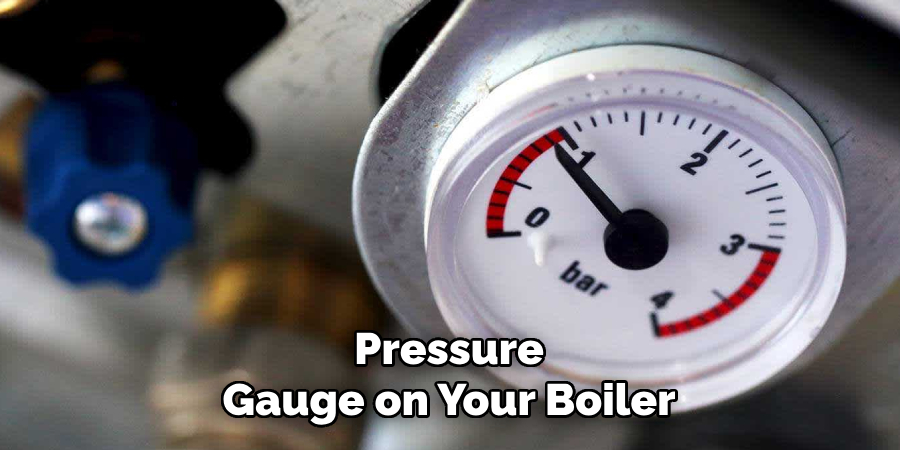
has dropped below the recommended level, you may need to top it up by using the filling loop as per your boiler’s manual. Maintaining the correct pressure is essential for the efficient functioning of your heating system. Once the pressure is restored, your radiators should be fully operational and heating as expected.
Step 6. Perform a Final System Check:
Once you have bled the radiators and checked the boiler pressure, performing a final system check is a good idea. Turn your heating system back on and allow it to run for a while. Walk around your home and check each radiator to ensure it is heating evenly from top to bottom. If you notice any cold spots or uneven heating, you may need to repeat the process for specific radiators. This final step ensures that your heating system runs at peak efficiency, providing a warm and comfortable home.
Step 7. Schedule Regular Maintenance:
To ensure your heating system continues to perform efficiently, it’s important to schedule regular maintenance. Have a qualified professional service your boiler annually to check for potential issues and keep it in good working condition. Regular maintenance extends the lifespan of your system, reduces the risk of breakdowns, and ensures it operates safely and effectively. Additionally, watch for early warning signs such as strange noises, leaks, or a drop in performance, and address them promptly.
Step 8. Upgrade Your Thermostat:
Consider upgrading to a programmable or smart thermostat to enhance the efficiency of your heating system. These modern thermostats allow you to set schedules, adjust temperatures remotely, and optimize energy usage based on your daily routines. A smart thermostat can help lower energy bills while maintaining consistent and controlled heating while keeping your home comfortable. Over time, this upgrade can be a cost-effective investment for maintaining a warm and energy-efficient household.
Step 9. Seal Gaps and Insulate:
Inspect your home for any gaps, cracks, or areas where heat may escape, such as around windows, doors, or poorly insulated walls. Use weather stripping, caulking, or draft excluders to seal these inefficiencies. Additionally, ensure your
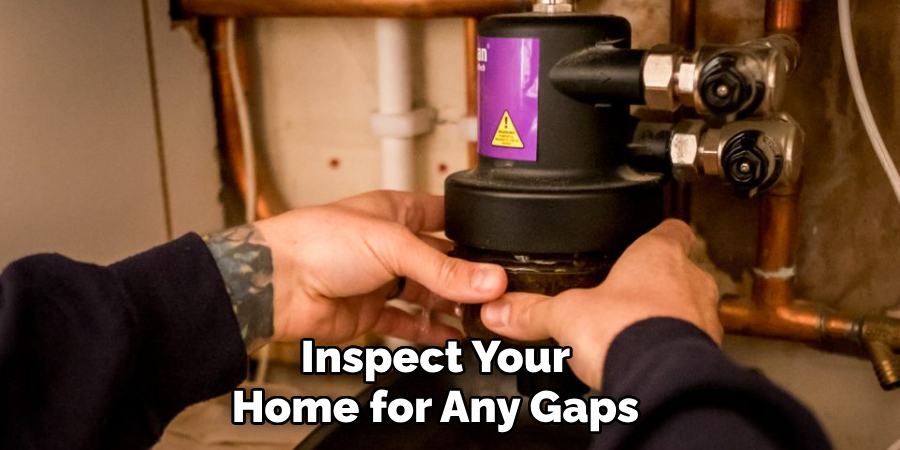
home has proper insulation in the attic and walls to prevent heat loss. Addressing these issues can significantly improve your home’s energy efficiency and reduce heating costs.
Step 10. Maintain Your Heating System Regularly:
Schedule regular maintenance for your heating system to ensure it operates efficiently and safely. This includes cleaning or replacing filters, checking for leaks or blockages, and servicing components like burners and heat exchangers. A well-maintained system works more effectively, uses less energy, and reduces the likelihood of costly repairs. Regular upkeep extends the lifespan of your heating system and keeps your home consistently warm during colder months.
By following these simple steps, you can efficiently bleed your radiators and maintain a warm and comfortable home.
5 Things You Should Avoid
- Bleeding Without Turning Off the System: Always ensure the heating system is powered off before attempting to bleed the radiator. Failing to do so can lead to hot water spraying, causing burns and potential injury.
- Ignoring the Correct Tools: Using improper tools, such as pliers or random objects, can damage the bleed valve. Always use a radiator key or the specific tool recommended by the manufacturer.
- Skipping Safety Precautions: Neglecting to lay down towels or a container to catch excess water can result in a mess on your floors. Prepare adequately to prevent water damage.
- Wrong Bleed Order: Starting with the wrong radiator can disrupt the efficiency of the process. Always follow the correct sequence, starting with the one furthest from the boiler.
- Over-tightening the Bleed Valve: After bleeding, avoid over-tightening the valve as this can strip the threads or damage the mechanism, leading to leaks. Tighten it firmly but carefully.
Conclusion
How to bleed hot water heat is a straightforward process that can greatly improve the efficiency of your radiators and maintain a comfortable environment in your home.
Following the correct steps and avoiding common mistakes can ensure the process is safe, clean, and effective. Always prioritize safety by turning off the heating system, using the proper tools, and preparing the area to catch any water. Additionally, adhering to the recommended bleed sequence will help maximize the performance of your heating system.
Regular maintenance, including bleeding radiators as needed, will extend the lifespan of your heating system and keep it functioning at its best.
About the Author
Adrian Green is a passionate woodworking enthusiast who has dedicated his life to the craft of woodworking. From his early days working alongside his father in the family woodworking shop, Adrian has honed his skills and developed a deep love for creating beautiful, functional pieces with his hands. As the voice behind The Woodenify Blog, he shares his knowledge, tips, and inspiration with fellow woodworkers of all skill levels, helping them build confidence in their abilities while learning new techniques.
Professional Focus
- Specializes in DIY woodworking projects, from furniture making to home décor.
- Provides step-by-step guides, tips, and practical tutorials for woodworkers at any skill level.
- Focused on empowering readers with confidence and knowledge through easy-to-follow instructions and hands-on techniques.
- Passionate about building a community where makers can share, learn, and grow together in the world of woodworking.
Education History
University of Craft and Design – Bachelor of Fine Arts (BFA) in Woodworking and Furniture Design
Woodworking Apprenticeships – Gained extensive hands-on experience through various workshops and mentorships with seasoned craftsmen, refining carpentry and furniture-making skills.
Expertise
- DIY woodworking, carpentry, furniture making, and home décor projects.
- Creating clear, accessible tutorials and guides for beginner to advanced woodworkers.
- Helping readers experience the satisfaction and fulfillment of turning raw materials into stunning finished products.
